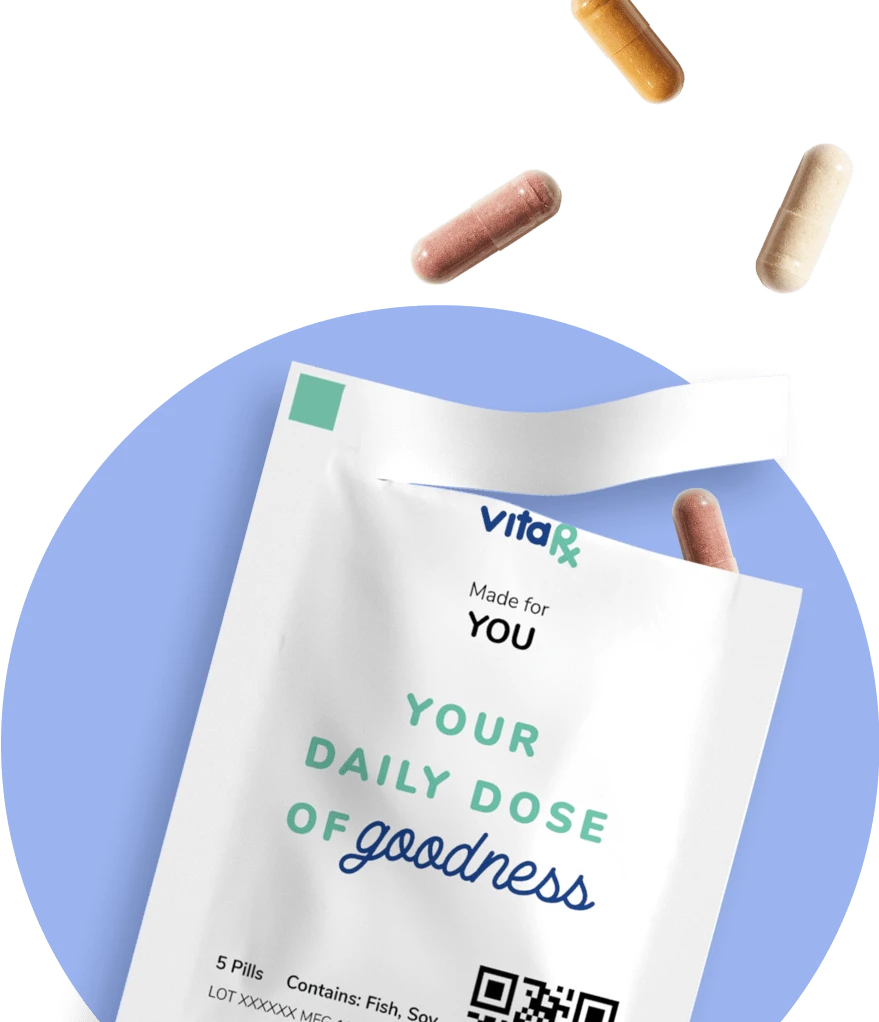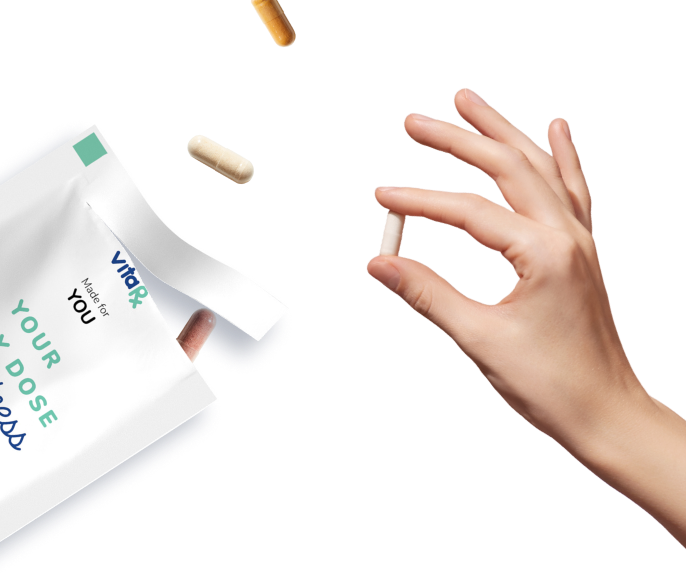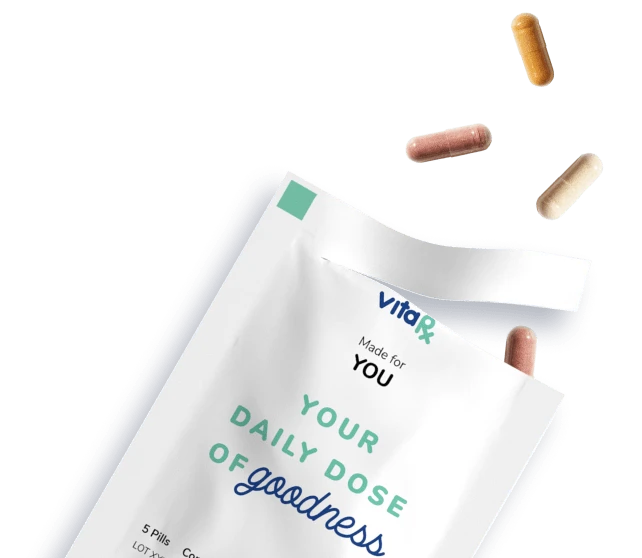Last update: July 17, 2025
12 minute read
Omega-3 Deficiency: What Are the Symptoms, Causes, and Best Ways to Improve Your Levels Effectively?
Learn to identify omega-3 deficiency symptoms, explore common causes, and discover dietary and supplement solutions to improve your omega-3 intake and health.

By Derick Rodriguez, Associate Editor
Edited by Stephanie Wright, RN, BSN

Wonder if the dryness of your skin or the nagging fatigue you feel is more than just an inconvenience? Suboptimal omega-3 intake may subtly affect aspects of wellness, including cognitive focus, skin condition, and emotional balance.
Understanding how these essential fatty acids—found abundantly in seafood, nuts, and seeds—can change your quality of life is crucial. Fortunately, pinpointing the signs and addressing an omega-3 shortfall isn't complex.
Whether you're vegan, vegetarian, or simply dislike fish, supplements like plant-based omega-3 supplements offer a simple path back to nutritional balance. Let's dive into how a small dietary tweak can give you life-changing benefits.
Key takeaways
- Omega-3s must be obtained from diet or supplements for heart, brain, vision, and immune health
- Dry skin, brittle nails, mood changes, cognitive issues, and vision problems may signal deficiency
- Western diets can tip omega-6/omega-3 balance and raise deficiency risks
Understanding omega-3 fatty acids
Omega-3s are essential polyunsaturated fats that your body can't make on its own—you've got to get them from your diet. They exist primarily in three forms: ALA, EPA, and DHA.
EPA and DHA come mainly from seafood like salmon and sardines, while ALA is found in plant foods like flaxseeds and walnuts.
Now that we've identified these forms, you might also be curious about their functional differences:
- ALA (alpha-linolenic acid): Plant-based, supports cell structure but needs to be converted to EPA/DHA for most health benefits.
- EPA (eicosapentaenoic acid): Mostly from fish, fights inflammation, important for heart/mental health.
- DHA (docosahexaenoic acid): Fish/algae-derived, important for brain, eye, and nervous system development.
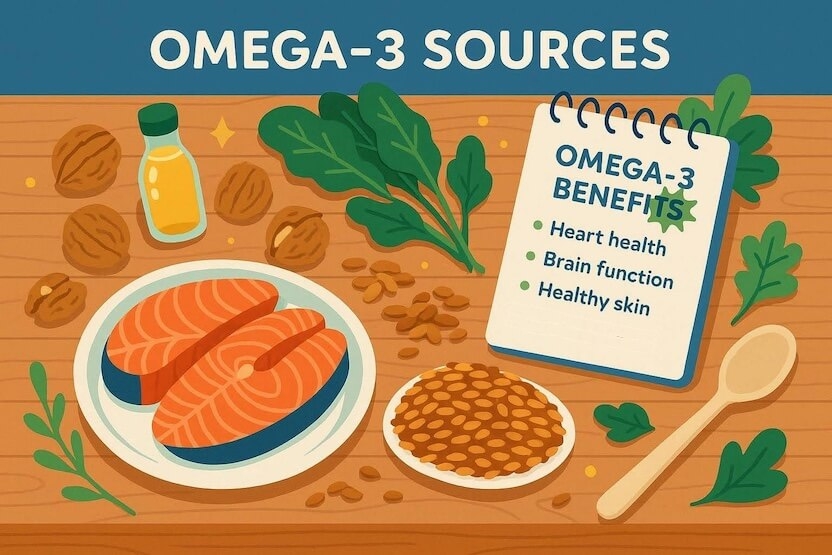
Here’s a handy breakdown of omega-3 types and food sources:
Type | Source | Main Benefit |
|---|---|---|
ALA | Flaxseed, walnuts, plant oils | Essential for cell membrane functions, heart health |
EPA | Fish (salmon, mackerel) | Heart health, anti-inflammatory |
DHA | Fish, algae (sardines, herring) | Brain health, vision, mood regulation |
But does your body easily convert plant-based ALA to EPA and DHA? Your body converts only a small amount of ALA—typically estimated at <5 % to EPA and <0.5 % to DHA—into the long-chain forms EPA and DHA, so eating direct sources of EPA/DHA is important, especially if you don’t eat fish or fortified foods.
ALA is essential!
ALA is considered an essential fatty acid—your body relies on dietary sources like flaxseed oil, soybean oil, and canola oil, since it can't be made by your body internally.
The importance of omega-3s in nutrition and wellness
These nutrients do a lot of heavy lifting—they maintain heart health, keep your brain sharp, boost your mood, and even support your eyesight and immune function. Think of omega-3s as an MVP nutrient helping your cells function smoothly.
Omega-3s become part of your cell membranes, making them more flexible and efficient at communicating signals, which affects everything from inflammation control to neurotransmitter function.
In fact, omega-3 fatty acids are important components of your cell membranes and play a role in the structure and function of every cell in your body.
Some research shows that diets rich in omega-3 can lower cholesterol and triglyceride levels, helping to support cardiovascular function and may protect against certain forms of heart disease.
Cholesterol is a fatty substance your body uses to build cells; triglycerides are the most common type of fat in your blood. High levels of both can raise heart disease risk—omega-3s help lower them.
Ready to see what deficiency looks like?
Recognizing the signs of omega-3 deficiency
While true deficiency is rare in the U.S, suboptimal omega-3 levels are common. Here’s how your body signals you might not be getting enough:
Physical symptoms
Dry skin, brittle nails, hair thinning or loss, and joint pain are common physical markers. You might notice your skin feels rough, scaly, or itchy.
Omega-3s help keep the moisture barrier in your skin, nourish hair follicles, and curb inflammation in joints—so a lack may show up as dryness, weakness, or ache.
Symptoms like dry skin and dermatitis have been reported in cases of severe omega-3 deficiency, but these signs are not specific and can result from many other causes.
Deficiencies are rare!
Omega-3 deficiency itself is pretty rare in the United States, but symptoms, especially for people who eat little to no seafood, can still happen.
Specialized tests can check your omega-3 index, which measures EPA and DHA as a percentage of your red blood cell fats.
Cognitive and emotional indicators
Mental clarity and emotional wellness rely heavily on omega-3s. Noticed moodiness, stress sensitivity, anxiety, or trouble focusing? Low levels of omega-3 can contribute to these emotional downturns.
Some studies suggest a possible link between omega-3 status and mood or attention span. DHA makes up a big chunk of your brain’s gray matter—not enough omega-3s can compromise communication between brain cells, influencing memory, focus, and mood.
For example, omega-3 deficiency has been shown to relate to a higher incidence of depression and difficulties in maintaining mental focus.
Several clinical trials have investigated the potential benefits of omega-3 supplementation for people whose depressive symptoms weren’t relieved by standard antidepressants, with mixed results.
Some kids need more omega-3s!
Research has found that children diagnosed with ADHD often have lower levels of omega-3 fatty acids in their blood.
You might wonder if you can “feel” a deficiency right away. Deficiency symptoms like mood changes or brain fog usually develop over weeks to months and can be subtle, making them easy to overlook.
Visual and other health concerns
Tired eyes, vision problems, fatigue, and weakened immunity can also point to omega-3 shortfalls—DHA is important for vision and general energy levels.
DHA is concentrated in your retina. Not enough DHA can hurt visual function and may raise your risk for dry eye syndrome and even age-related vision issues.
Omega-3 fatty acids help keep eye moisture and support eye health; some studies link low levels to increased dry eye and vision challenges.
Omega-3s play a role in modulating inflammatory processes, so inadequate intake may influence immune responses and recovery, although direct evidence linking low omega-3 status to higher infection rates is limited.
Next, what actually causes low omega-3?

Get your personalized vitamin recommendations in less than 3 minutes.
Get your personalized vitamin recommendations in less than 3 minutes.

Causes of omega-3 deficiency
Dietary factors
Our modern diets, heavy on processed foods and vegetable oils high in omega-6 fatty acids, can tilt the balance away from omega-3s. Ideally, your diet should strike a balance between omega-3 and omega-6 due to their competitive relationship.
High omega-6 intake may overpower omega-3 benefits because both use the same enzymes for metabolism. Too much omega-6 can promote inflammation, especially if omega-3 is low.
How much omega-3 do you need?
For reference, here’s a basic table of recommended daily ALA intake by life stage:
Life Stage | Recommended Amount of ALA |
|---|---|
Birth to 12 months* | 0.5 g |
Children 1–3 years | 0.7 g |
Children 4–8 years | 0.9 g |
Boys 9–13 years | 1.2 g |
Girls 9–13 years | 1.0 g |
Teen boys 14–18 years | 1.6 g |
Teen girls 14–18 years | 1.1 g |
Men | 1.6 g |
Women | 1.1 g |
Pregnant teens and women | 1.4 g |
Breastfeeding teens and women | 1.3 g |
These numbers are for ALA only—the plant-based omega-3. There are currently no official daily recommendations for EPA and DHA, though experts often suggest 250–500 mg/day combined for most adults.
Health conditions and lifestyle choices
Conditions like IBS, Crohn’s disease, and diets without fish and seafood—particularly common in vegetarian or vegan lifestyles—can also create omega-3 gaps.
Older adults, infants (especially formula-fed without DHA), and pregnant women have higher omega-3 needs due to developmental and aging processes.
Genetic factors can affect how well your body converts plant-based ALA into the more active forms of EPA and DHA, thus changing your specific omega-3 requirements.
Some people with certain genetic changes or absorption issues may need more dietary sources or higher doses of supplements to reach optimal omega-3 status.
Ready to take action? See how to boost your intake below.
Addressing omega-3 deficiency: Solutions and recommendations
Dietary adjustments
Easiest hack here—include omega-3-rich foods regularly:
- Fatty fish: salmon, mackerel, sardines
- Plant-based options: flaxseeds, chia seeds, walnuts
We suggest starting with two servings of fatty fish each week—each serving around 3.5 ounces (about the size of a deck of cards).
Quality supplements are purified!
Most high-quality fish-oil supplements undergo purification processes that greatly reduce mercury to negligible levels.
Supplements are purified during processing, so toxin risk is minimal—especially if you buy from reputable brands. Getting omega-3s from diet is generally thought of as the best approach, but for people who struggle with dietary restrictions or absorption, supplementation can help.
For vegetarians and vegans, plant-based sources like flaxseed, chia, and hemp offer ALA, while algae-based supplements give DHA/EPA directly with no animal products.
Omega-3 supplements
Supplementation can be a simple, reliable way to add to omega-3 levels. High-quality supplements give you control over exactly how much you’re taking, with minimal guesswork.
We recommend choosing third-party tested products for purity to avoid contaminants.
For most healthy adults, daily supplements in the range of 250–1,000 mg combined EPA/DHA are considered safe. Very high intakes (>3 g/day) should be supervised by a doctor due to possible bleeding risks.
Omega-3 supplements come in many forms, including fish oil (for EPA and DHA) and algal oil (a vegan-friendly DHA and EPA source). Both types are available as capsules, liquids, or pills. Omega-3s are best absorbed with a meal containing some fat.
Lifestyle changes
Reducing stress and managing inflammation through exercise, meditation, or better sleep can also support the benefits of omega-3s. Your body naturally operates better when not chronically inflamed.
Feeling overwhelmed about where to start? Even small improvements—like a short daily walk, regular bedtimes, and mindful breathing—can help your omega-3s work harder for your health.
Comparing omega-3 supplement options
Fish oil supplements
Fish oils offer great DHA and EPA levels, but avoid low-quality brands to lower toxin exposure.
Quick checklist:
- Look for third-party testing or certification (like IFOS, USP, or NSF labels)
- Choose products with transparent sourcing info
- Check for freshness (no fishy smell) and minimal extra ingredients
Research shows that omega-3-sourced fish oil may help lower triglyceride levels and modestly reduce blood pressure and rheumatoid arthritis symptoms. It's important to stick to recommended dosages to avoid risks like increased bleeding tendency at high doses.
Algal oil supplements
Algal oil supplements give a great vegan DHA and EPA source, making them perfect for the plant-based lifestyle. Both fish oil and algal oil provide EPA and DHA, but algal oil skips the fishy taste and is a sustainable, allergen-friendly option—especially for those with dietary restrictions.
VitaRx omega-3 supplements
At VitaRx, our omega-3 products are high-grade, sustainably sourced, and rigorously tested. Whether fish-based or plant-based, we've tailored these supplements to fit easily into your wellness routine without unnecessary complications.
We’ve made our VitaRx blends easy to swallow, with options for every lifestyle.
Type | Best For | Key Feature |
|---|---|---|
Fish Oil | Omnivores, high EPA/DHA needs | Traditional source, higher EPA |
Algal Oil | Vegetarians, vegans, allergies | Plant-based, naturally high DHA |
VitaRx Blends | Anyone, quality-seekers | Transparency, tested purity, variety |
Frequently asked questions (FAQ)
Here are some of the most frequently asked questions about omega-3 fatty acids.
Final thoughts
Making sure you get enough omega-3 is simpler than it sounds—your body's signals, from dry skin and joint aches to mood swings and vision changes, offer clear hints.
Including omega-rich foods like fatty fish, flaxseeds, and walnuts, or choosing high-quality supplements, can refill your omega-tank, improving the function of your body and mind alike.
Sources and references
- Omega-3 Fatty Acids & the Important Role They Play
- Omega-3 Fatty Acids - Health Professional Fact Sheet
- The Importance of Marine Omega-3s for Brain Development and the Prevention and Treatment of Behavior, Mood, and Other Brain Disorders - PMC
- Effects of Omega-3 Fatty Acids on Immune Cells - PMC
- Omega-3 Fatty Acids and Eye Health: Opinions and Self-Reported Practice Behaviors of Optometrists in Australia and New Zealand
- Omega-3 fatty acids mediated Cellular signaling and its regulation in Human Health - ScienceDirect
- Long-chain omega-3 fatty acid serum concentrations across life stages in the USA: an analysis of NHANES 2011–2012
- 8 Common Signs of an Omega-3 Deficiency
- Omega-3 Deficiency: Causes,Symptoms, and Effective Treatment Options
- Omega-3 fatty acids and mental health - ScienceDirect
- Omega-3 fatty acids and the treatment of depression: a review of scientific evidence - PMC
- Omega-3 Fatty Acids - Health Professional Fact Sheet
- Omega-3 Fatty Acids | AAFP
Editor

Derick Rodriguez
Derick Rodriguez focuses on editing health and wellness-related content. With over half a decade of experience in the digital realm, Derick has developed a unique skill set that bridges the gap between complex health concepts and accessible, user-friendly communication. His approach is deeply rooted in leveraging personal experiences and insights to illuminate the nuances of health and wellness topics, making them more approachable and empowering readers with knowledge and confidence.
Author

Stephanie Wright
Stephanie brings over 13 years of diverse nursing experience to the table, having honed her expertise in critical care, mental health, and utilization management. Her journey as a registered nurse across these various healthcare sectors underscores her adaptability and deep commitment to patient care.
At VitaRx, we're not just passionate about our work — we take immense pride in it. Our dedicated team of writers diligently follows strict editorial standards, ensuring that every piece of content we publish is accurate, current, and highly valuable. We don't just strive for quality; we aim for excellence.
Related posts
While you're at it, here are some other relevant articles you might be interested in.
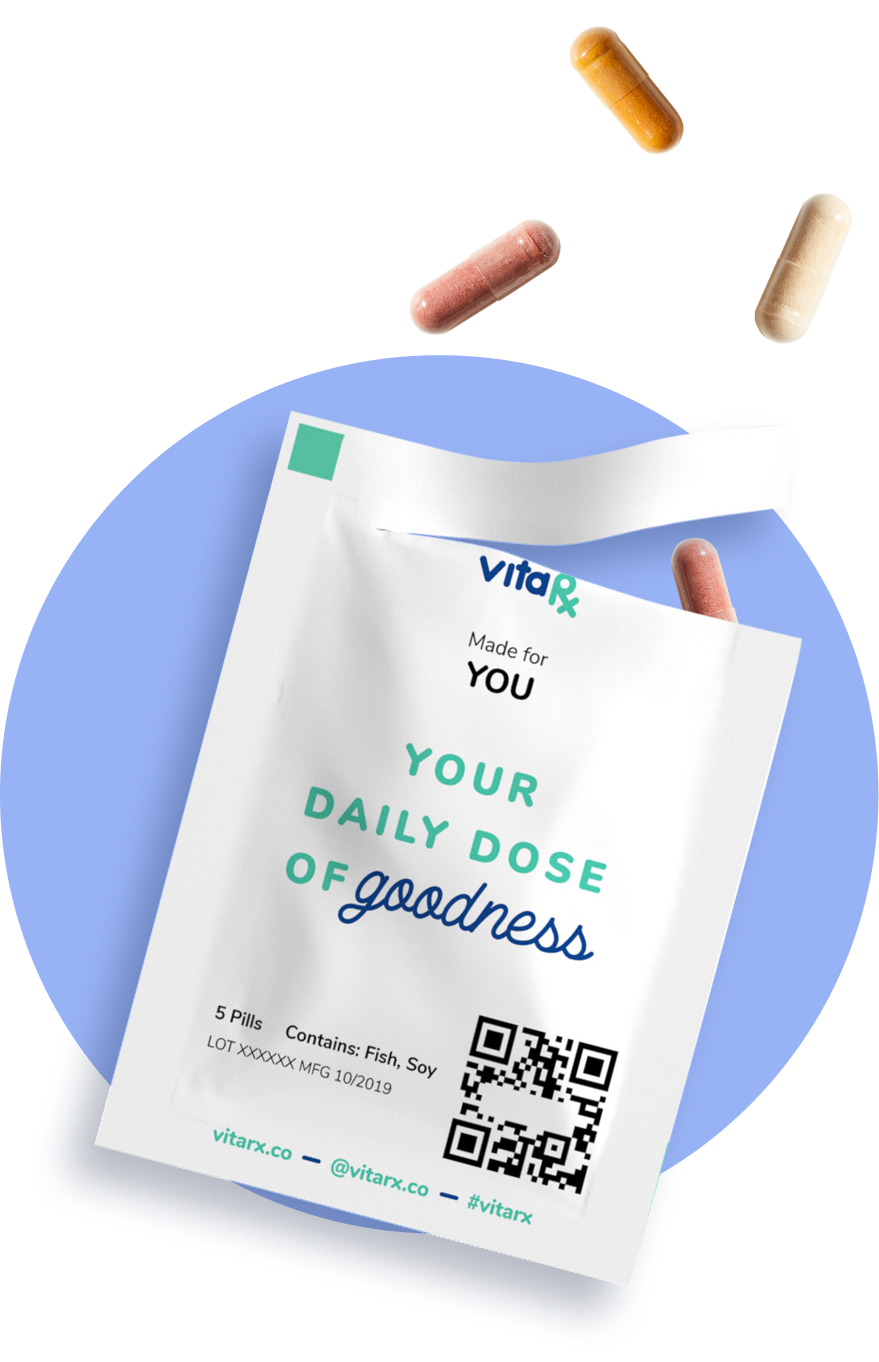
Get your personalized vitamin recommendations in less than
5 minutes.
Get your personalized vitamin recommendations in less than
5 minutes.
